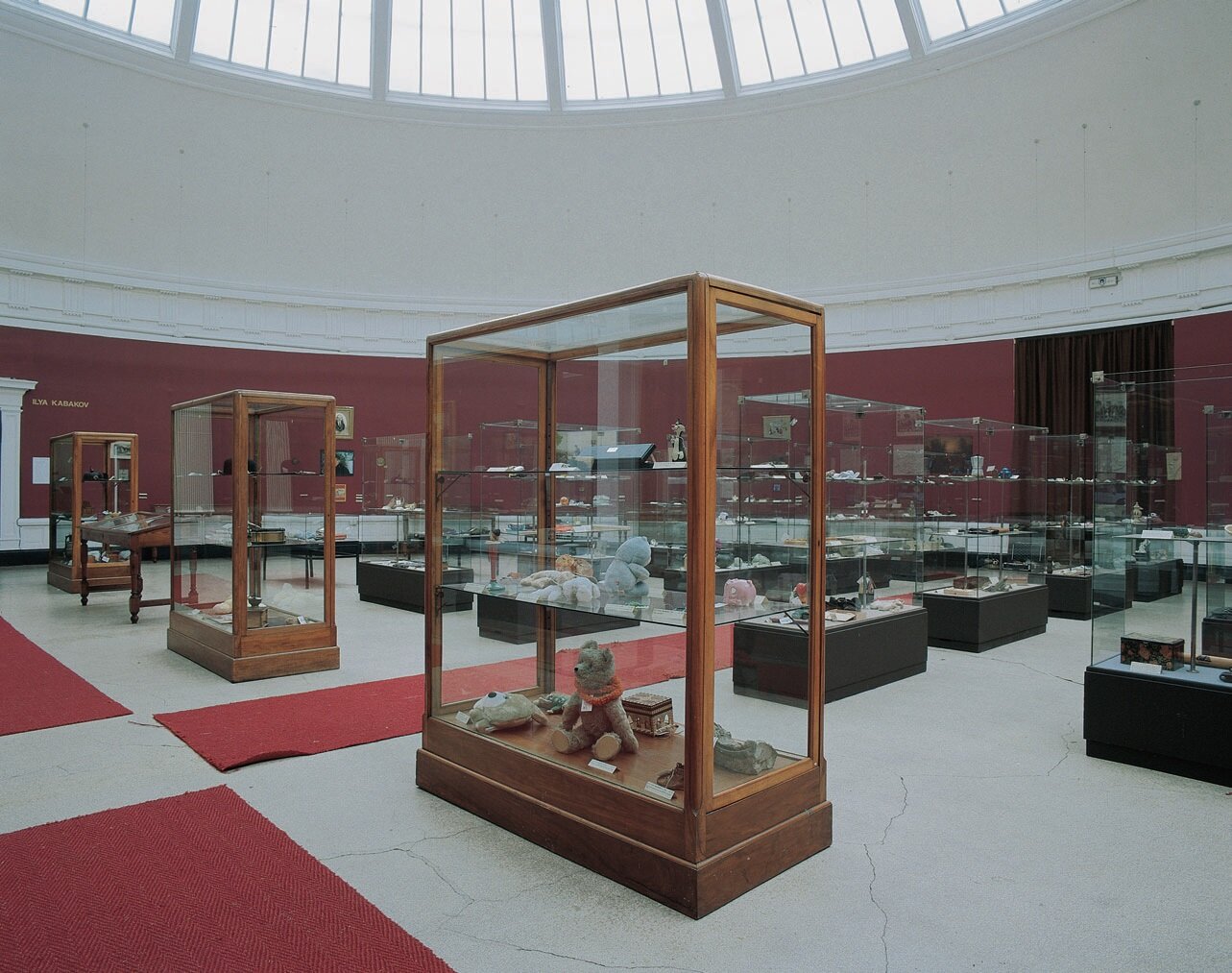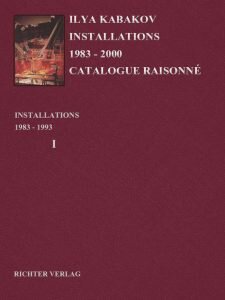Rendez(-)Vous
YEAR: 1993
CATALOGUE NUMBER: 68
PROVENANCE
The artist
Not preserved
EXHIBITIONS
Ghent, Museum van Hedendaagse Kunst
Rendez(-)Vous. Jimmie Durham, Henk Visch, Ilya Kabakov & Huang Yong Ping, 28 Apr 1993 — 27 Jun 1993
CONCEPT OF THE INSTALLATION
In the fall of 1992, Jan Hoet, the director of the Museum of Contemporary Art in Ghent, proposed to four artists from four countries the following idea: to make an installation from things belonging to completely real people, moreover, using things that were very special.
All around the city of Ghent and in the press, announcements were made about an action to take place in the Ghent museum in the near future. Every person who wanted to could participate in this by bringing to the museum his or her ‘very favorite thing’ and leaving it there for a little while. Four artists would select from among these things objects that would be appropriate and they would create from them their own compositions that would then be displayed at a special exhibition in the museum. The city residents responded unbelievably actively. Children and adults started to bring the most varied, often unexpected things. Among them were a lot of very valuable and expensive things. All of this was carefully cataloged and laid out on the floor in the museum in three large halls. And, what turned out to be very important for me, was that in recording each object into an enormous accounting book, the museum assistant asked each ‘owner’ to jot down at least a few words about what this ‘thing’ was connected to for him, with what event or memory, and virtually everyone did this quite willingly. A month before the exhibit, each of the four artists began to select ‘his’ things required for his work.
The place I chose for the installation was comprised of a very large semi-cylindrical hall, a genuine ‘museum’ hall with an enormous barrier along the entire wall (the only thing it didn’t have was the dark red walls, and I did those first) and a semi-circular hallway. In these two places, I arranged two different plots: the delivery and inventory of valuable things to the museum and the displaying of these things in the exhibition hall.
In the semi-circular hallway that was divided on the side into 7 sections by partitions, an atmosphere of a mixture of chaos and order reigned like that in any ‘reception’ area: there were things on the table, notes belonging to the register. Nearby were papers, registers, protocols. All around on the floor and on shelves were objects that had already been ‘registered,’ many of them already in crates ready to be sent off, and there were unbelievable combinations of things – bicycles, a vase, an old book, photographs of relatives.
The viewer walked along this circle as if in an antique shop after it had just moved to a new location. Yet there was one other ‘circumstance’ (if we might express it this way) to the left of the viewer: a muffled singing could be heard from behind the walls, so that it was as though the viewer was walking along a corridor-foyer at that moment when a concert was taking place on the other side of the wall. This effect created by the preliminary visiting of a foyer really did function quite strongly when the viewer, having grown tired of the spectacle of chaos, and finally having reached the end of the corridor and drawing back the curtains, found himself in an enormous, one must say, wonderful hall where a concert was taking place in a musical and ‘visual’ sense. In the first sense, the hall was filled – the acoustics in it were magnificent – with a voice performing rather melancholy songs with ‘touching’ melodies. In the second sense, the viewer saw purity, organization, that ‘sacred’ order that reigns in any museum of classical art and even, or especially so in the Roman or Egyptian halls of ‘antiquity’ in the Louvre or the British Museum. But instead of antique vases, bronze statuettes, and pages of papyrus, lying behind the glass in rows were aluminum spoons, an old radio, a plastic duck, an old felt hat. There was also a label under each object with a text by the owner of the object, also in the spirit of museum expositions.
The effect of the combination of a museum atmosphere and the things that are almost always banal, domestic, that don’t really have any meaning for others, cheap souvenirs – was very powerful and piercingly touching. In the museum where, as we well know, things are displayed that are commonly believed to be historically, artistically, or socially important, we have displayed instead things that are none of these, and that cannot possibly have any significance whatsoever. But after all, this is a very valuable thing for the person who has it. For him, for his personality, it is extraordinary, it is the only one of its kind – a gift from father, a letter from an old acquaintance, a photograph of one’s aunt. And in this sense it can, must, be considered as an equal to the priceless antique gem or jewelry of a princess from the 2nd-century b.c. And in essence, wasn’t this piece of jewelry, in its own time, just the same as one bought in a department store today? And couldn’t this princess bring it to the Ghent Museum today, just like Alina K. did, who lives at 5 Ringstreik, who brought this plastic lion cub?
Description of the Outer Passageway
‘Sorting, Packing’
In each of the 7 sections divided by barriers there is a table (an old, wooden one) and a chair next to it – apparently, the person who sits here has gotten up and has stepped out to smoke in the hallway, perhaps. Near the table, on the floor in crates and simply scattered on the floor, there are a lot of different objects: jars, lamps, toys, books, all kinds of old junk. The same kinds of objects are on the table to the right. But order reigns on the left side: there in a few crates with compartments are objects neatly sorted, wrapped in paper and accompanied by a number and label. Nearby is a register, a record of all the things in order in a large book.
Before us is a very serious process, a magical ritual: the transformation of chaos into order, of namelessness into naming, unrecorded things into inventoried things. Crates ready to be shipped off stand near the table, on the left side of the table. Where are they going? Again we have mysticism, a mystical question. There is no answer to it. There is only the ‘face’ – the person who is arranging, packing, and recording everything into this thick book … but he has stepped out to smoke.
Images
Literature







